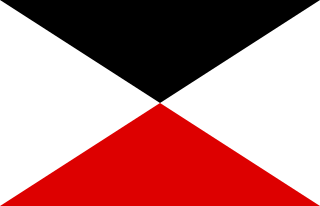
The IV Army Corps / IV AK was a corps level command of the Prussian and then the Imperial German Armies from the 19th Century to World War I.
The history of the German Cavalry in World War I is one of an arm in decline.

The I Cavalry Corps was a formation of the German Army in World War I. It was formed on the mobilization of the German Army in August 1914 and disbanded in March 1918.

The III Cavalry Corps was a formation of the German Army in World War I. The corps was formed on mobilization of the German Army in August 1914 and disbanded in 1919 during the demobilization of the German Army after World War I.

The 9th Army was an army level command of the German Army in World War I. It was formed in September 1914 in Breslau to command troops on the southern sector of the Eastern Front. The army was dissolved on 30 July 1916, but reformed in Transylvania on 6 September 1916 for the Romanian Campaign. It was transferred to the Western Front on 19 June 1918 where it was finally dissolved on 18 September 1918.

The V Cavalry Corps was a formation of the German Army in World War I.

The VI Cavalry Corps was a formation of the German Army in World War I.

Cavalry Corps Schmettow was a formation of the German Army in World War I.

The 54th Corps was a corps formation of the German Army in World War I. It was formed in September 1916 and was still in existence at the end of the war.

The 53rd Corps was a corps formation of the German Army in World War I. It was formed in September 1916 and was still in existence at the end of the war.

The 52nd Corps was a corps formation of the German Army in World War I. It was formed in September 1916 and was still in existence at the end of the war.

The 55th Corps was a corps formation of the German Army in World War I. It was formed as a temporary Bernhardi Corps on 6 June 1916 before being established on 1 October 1916. It was still in existence at the end of the war.

The 64th Corps (Württemberg) was a corps formation of the German Army in World War I. It was formed in January 1917 and was still in existence at the end of the war.

The 66th Corps was a corps formation of the German Army in World War I. It was formed on 9 May 1917 and was still in existence at the end of the war.

The 60th Corps was a corps formation of the German Army in World War I. It was formed on 20 November 1916 by the establishment of Gruppe Mitau and was still in existence at the end of the war.

The 63rd Corps (Bavarian) (German: Generalkommando zbV 63 (Bayern)) was a corps formation of the German Army in World War I. It was formed in January 1917 and was still in existence at the end of the war.

The 61st Corps was a corps formation of the German Army in World War I. It was formed in November 1916 and was still in existence at the end of the war.

The 67th Corps was a corps formation of the German Army in World War I. It was formed on 17 September 1917 and was still in existence at the end of the war.

The 68th Corps was a corps formation of the German Army in World War I. It was formed in March 1918 and was still in existence at the end of the war.

The 62nd Corps was a corps formation of the German Army in World War I. It was formed in January 1917 and dissolved in October 1918.



